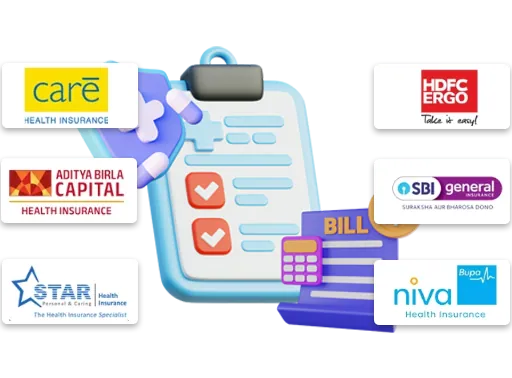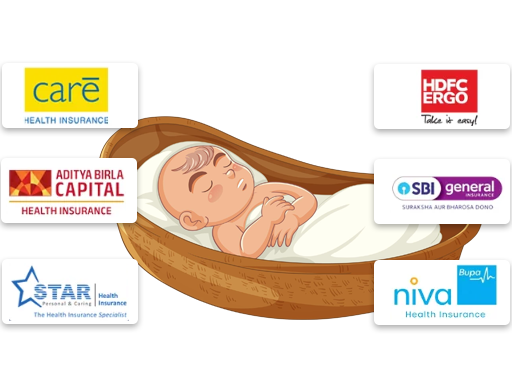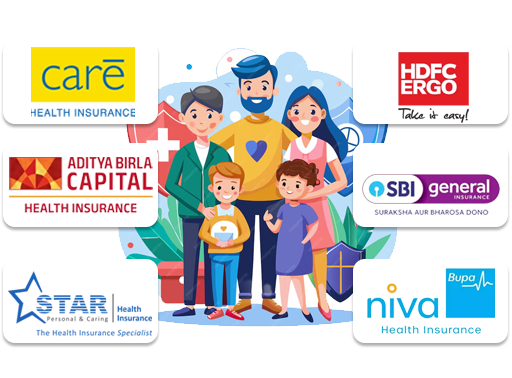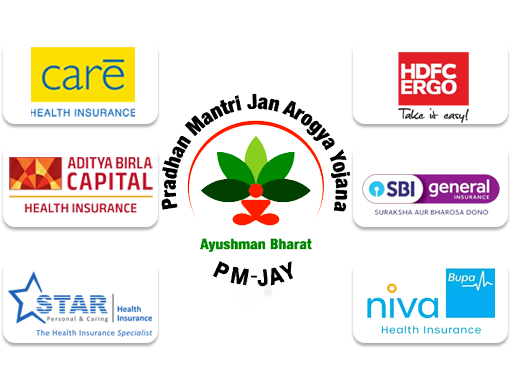- Global Insurance Landscape
- Health Insurance Coverage
- State-wise Variation

Simran has over 3 years of experience in content marketing, insurance, and healthcare sectors. Her motto to make health and term insurance simple for our readers has proven to make insurance lingos simple and easy to understand by our readers.
Reviewed By:

Anchita has over 6 years of experience in content marketing, insurance, and healthcare sectors. Her motto to make health and term insurance simple for our readers has proven to make insurance lingos simple and easy to understand by our readers.
Updated on Aug 13, 2024 4 min read




Health Insurance Statistics of 2025
Recently, IRDAI announced the goal of "Insurance for all by 2047" in synchrony with the broader national intent of India becoming a global superpower.
But,
Are we really cautious about our health insurance coverage? Yes, we do, when some medical emergency hits. This is the irony of health insurance in India . We take it as an expenditure, wherein it is the financial tool that will protect us during the time of emergency. This is the problem for most of the Indian population.
This article will take you to the health insurance statistics of India. Read below to know about interesting facts about the statistics.
Healthcare Systems in India- An Overview
The Indian healthcare industry is a powerhouse. It ranks among the largest sectors in terms of revenue and job creation in India. Even in the last annual budget 2023-24, the Ministry has allocated Rs 89,155 Crore to the Ministry of Health and Family Welfare which is a 3.43% increase over the previous year.
Health insurance is also part of the healthcare system. It provides the finances for:
- Hospital bills
- Charges for medical devices used in the treatment
- Charges for any equipment
- Clinical trials
- Telemedicine
- Medical tourism
Segments in the Healthcare Sector of India
The Indian healthcare system is divided into two segments, the public sector and the private sector. In the public sector, every Indian is eligible for free healthcare services, under government facilities. But, when it comes to the private sector the services expenses are much higher. Indeed insurance is required if we want to go for treatment in private hospitals, healthcare centers, etc.
Now, the question arises, as to whether we want to go to the public sector for free medication or go to the private sector.
However, the public sector is free of cost, but it is difficult to cover a complete 141.72 crores population. So, somehow we have to seek the private sector for any emergency medical care.
Health Insurance Statistics at a Glance
Though the public sector offers free medical services, there is no doubt that the private sector has better care and better quality services and is equipped well with advanced systems.
Related to Coverage
According to the Statista
In 2021, approximately 514 million people were covered under health insurance schemes in India. This covers around 37% of the people in the country.According to Niti Ayog
In India, around 400 million individuals have no access to health insurance.
It is estimated that around 70% of the population is covered under public health insurance or voluntarily private health insurance. The remaining 30% of the population which is over 40 crore people do not have health insurance.
Related to Premium
According to Statista
In 2021, the gross written premium of the Indian health insurance industry was valued at over INR 637 billion.
The public sector health insurers have recorded around INR 272 billion in premiums, the private sector has recorded INR 159 billion, and standalone health insurers recorded INR 151 billion in premiums in India.
| Financial Year | Premiums (in billion) |
|---|---|
| FY15 | 20,096 |
| FY16 | 24,498 |
| FY17 | 30,392 |
| FY18 | 37,029 |
| FY19 | 45,532 |
| FY20 | 50,752 |
| FY21 | 58,237 |
NFHS India Report 2019-2021
Related to Cost
According to the Economics Survey 2022-23 published in the PIB Government press release,
In FY23 the budgeted expenditure on healthcare nearly touched 2.1% of the GDP.
In FY22, the percentage was 2.2%.
And, in FY21, it was 1.6%.
The expenditure on healthcare services has increased from 21% in FY19 to 26% in FY23.
The social security cost has increased from 6% in FY14 to 9.6% in FY19 on health.
Related to State
Till now, health insurance coverage in India remains far from being satisfactory in all the states.
According to the National Family Health Survey
Only 41% of Indian households have at least one member covered.
Also, there is a concerning gender gap. Only 30% of women aged 15-49 years have health insurance as compared to 33% of men in the same age group.
Geographically, the distribution of health insurance is uneven. Have a look at the table below:
| State | % of families with at least 1 member covered under a Health Insurance |
|---|---|
| Rajasthan | 88% |
| Andhra Pradesh | 80% |
| Goa | 73% |
| Chhattisgarh | 71% |
| Telangana | 69% |
| Assam | 67% |
| Kerala | 58% |
| Mizoram | 50% |
| Gujarat | 44% |
| Himachal Pradesh | 39% |
| Tripura | 36% |
| West Bengal | 34% |
| Karnataka | 32% |
| Sikkim | 28% |
| Delhi | 25% |
| Nagaland | 22% |
| Maharashtra | 22% |
| Bihar | 17% |
| Jammu and Kashmir | 14% |
NFHS India Report 2019-2021
Related to Corporate
Corporate health insurance is also known as employer-sponsored health insurance which is usually provided by the employer of the company.
According to the Health Trend report shared by Mercer Mash,
The cost of employer-sponsored medical benefits in India has risen by 15%.
Why India needs better health insurance?
In India, lifestyle diseases like heart stroke, diabetes, asthma, etc. are quite common. Though you can find a suitable treatment for this disease very easily, the cost can be very high for many of us. This is because of the advancement in medical research and the use of advanced tools.
According to the MMB Health Trends Report
Around 5.8 million people lose their life due to non-communicable diseases in 2021.
Diseases like cancer, circulatory-based ailments, and COVID-19 were the top cost drivers of medical claims in Asia in 2021. Let me show the percentage below:
- Cancer- 55%
- Circulatory System based diseases- 43%
- Covid-19- 36%
Bottom Line
No doubt, we are growing in terms of the health sector. In the coming years, we can imagine a better picture of health insurance inclusion across India. There is still a long way to achieve "Insurance for all by 2047." Though, the government is increasing its budget for healthcare, and still, a significant portion of the population remains uncovered. Raising awareness about the importance of health insurance and making it affordable is the key to ensuring that everyone in India has access to the financial security that is provided by health insurance during the time of medical emergencies.
TTo read about the latest updates by IRDAI in health insurance, click here .
Consult for Personalized Insurance Advice

But how does it work?
Schedule a call with India’s number 1 trusted advisor with a 4.5+ rating on Google. We are not your average insurance agents. Our advisors are experts in their insurance knowledge and will give you the right information at the right time. The service is free of cost! Don’t worry, we won’t spam as we value your time.
Health Insurer Network Hospitals
Health Insurance Statistics in India: FAQs
1. How many people in India have health insurance?
According to Statista, over 550 million people were covered under health insurance schemes in India by 2023.
2. Why is health insurance coverage still low in India?
The reason could be affordability concerns, lack of awareness, and accessibility.
3. What is the percentage of insurance in India?
As per IRDAI, the insurance percentage in India is 4% in FY23.
4. How public and private health insurance schemes are different?
Public health insurance schemes offer free coverage but might have limitations. Meanwhile, private health insurance offers wider coverage but at a cost.
5. Is there a gender gap in health insurance in India?
Yes, the data shows that women in India have lower health insurance coverage rates as compared to men.
Health Insurance Companies
Know More About Health Insurance Companies
Share your Valuable Feedback
5
Rated by 1 customers
Was the Information Helpful?
Select Your Rating
We would like to hear from you
Let us know about your experience or any feedback that might help us serve you better in future.


Written By: Simran Saxena
Simran has over 3 years of experience in content marketing, insurance, and healthcare sectors. Her motto to make health and term insurance simple for our readers has proven to make insurance lingos simple and easy to understand by our readers.






 Reviewed By: Anchita Bhattacharyya
Reviewed By: Anchita Bhattacharyya

















Do you have any thoughts you’d like to share?